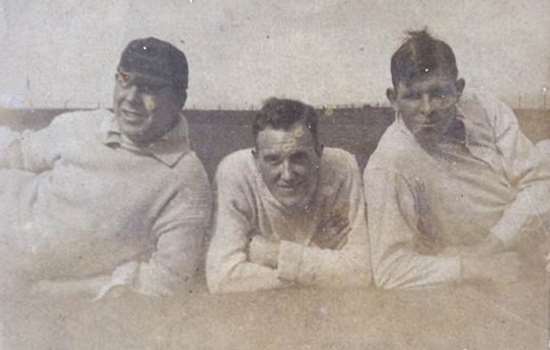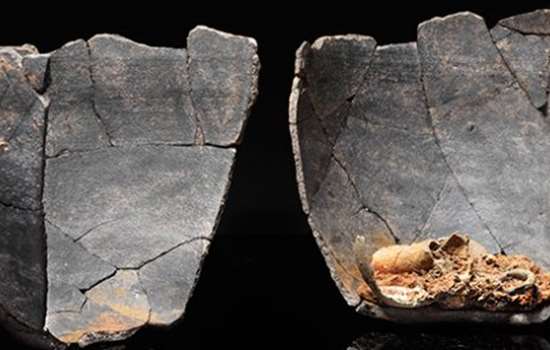
Within the walls of Richmond Castle, North Yorkshire, lies an unassuming cellblock, built by the military in the 19th century. Inside, drawn and scratched into the delicate limewashed walls, are thousands of graffiti inscriptions. They record the experiences of those held in and visiting the cells throughout the 19th and 20th centuries.
We know a little about a small number of these inscriptions, but the vast majority are yet to be researched. For over a year, a volunteer-led project supported by the Heritage Lottery Fund has been uncovering the stories behind the graffiti.
To celebrate National Volunteers’ Week 2018, Research Assistant Dr Lucia Morawska, caught up with Marcia Howard and Carol Chapell, two of the project’s volunteers, to talk about their experience and their recent findings.
What are you researching at the moment?
Carol: I’m researching some written graffiti left by James John Burchell, a conscientious objector (CO) who was held in the cells from May to July 1916. It reads:
I – J J Burchell
Wrea Head
Scally S.O
W Scarborough
Came into this Cell May 30th 1916 and after spending many happy days inside, was released June 14th 1916 for twenty four hours confined to barracks. Am much strengthened in my convictions and determined to stand firm
J.J.B
Burchell was employed as a gardener before and after the war at Wrea Head Hall, Scalby, Scarborough. His employers were the Ellis family who were Quakers. We’ve discovered that during his time at Richmond, Burchell regularly corresponded with Edith Ellis. She worked tirelessly for the pacifist cause and was imprisoned for her work with the Northern Friends Peace Board. During the research process several letters were found and 14 of them were written during Burchell’s time at Richmond. They contain previously unknown information about conditions in the cells.
Marcia: I am also currently working on the records of a conscientious objector, J W Green. This is the 6th piece of graffiti I have looked at since getting involved in the project, and my 3rd CO. I’m trying to link it with a piece of text nearby which appears to be written in a similar hand.
What do you enjoy most about researching the Richmond cells?
Marcia: I enjoy the fascination and challenge of trying to solve a puzzle, often with very little to go on.
Carol: Being part of a new research project where very little is known about the people behind the graffiti. As someone who grew up near Richmond I was surprised how little I knew about the cells. I have really enjoyed increasing my knowledge of the castle’s history. Meeting and corresponding with experienced researchers particularly on the subject of Quakers and conscientious objectors has been fascinating. Also being part of the enthusiastic research team where support is always available.
What has been your best moment while researching the cell block?
Carol: Finding the letters written by Burchell. Up until these letters were found in the Quaker library in London there was very little information available about this man. He wrote regular detailed accounts of his day to day experiences, including the treatment he received from the military and how he felt about his objections to the war.
Marcia: Probably my first piece of graffiti which turned out to be that of a CO, as well as a sense of satisfaction in uncovering family details and details of the life of that same man beyond the First World War.
What made you want to volunteer on this project?
Marcia: I have a lifelong passion for history. But more so, I was attracted to the idea of getting involved in a local project – with wider implications – in a town I love.
Carol: I was already volunteering as a steward in another English Heritage property and enjoying learning about the local history. I grew up near Richmond and loved the idea of being involved in a project that involved the castle. Also I had never done historical research before and wanted to challenge myself as well as contributing to a wider knowledge base.
What would you say to anyone thinking of volunteering?
Marcia: I would recommend it without hesitation, for the chance of contributing to your local community, meeting and making new friends, and learning something new.
Carol: Try it even if you have never done anything like it before. You can make it as big or as little a part of your life as you want. There is lots of positive support and you will always learn something new. You will meet people with similar interests to you and be part of something fascinating!
Find out more about volunteering with English Heritage and search for volunteer opportunities near you.
____________________________________________________________________________________________
Visit Richmond Castle
Visit Richmond Castle and learn all about the castle’s past in the interactive exhibition, take a peaceful stroll around the secluded Cockpit Garden, and see the breathtaking views of the Yorkshire Dales from the top of the castle keep. Due to the fragile nature of the graffiti, the cell block at is not currently open to visitors, but there is still plenty to see and do.
Learn More About the Graffiti
Read the stories of Richmond’s conscientious objectors, including the Richmond 16, and find out more about attitudes to conscientious objection during the First World War.
Learn about the conservation work we are doing to preserve the cell block graffiti.


